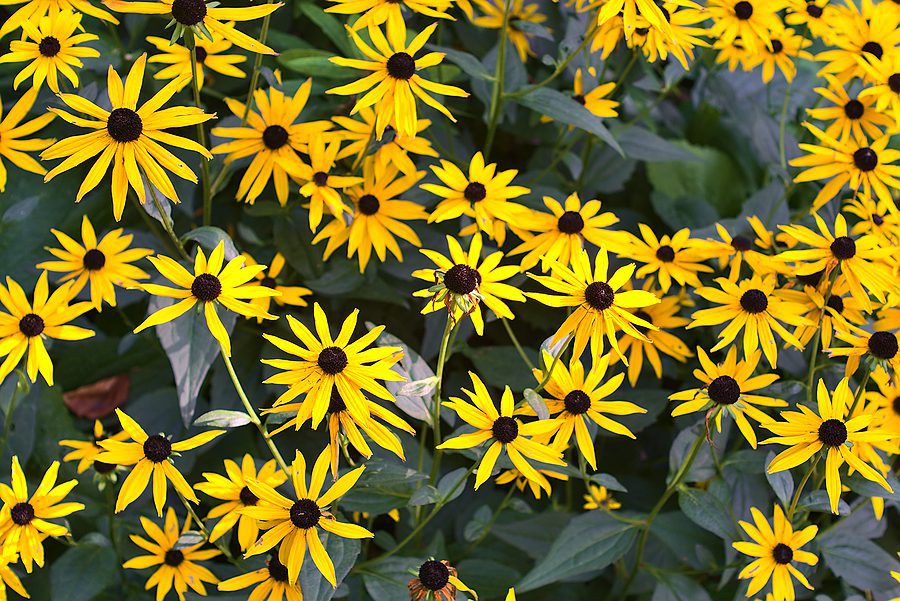Plant Perennials in the Fall Continually – Here’s Why

Are you planning to plant perennials in fall? Then you should go ahead with it without keeping a doubt in mind. That’s because fall is the ideal season for gardening. Continue to read and we will share more details with you on how to plant perennials in the fall.
Planting perennials in the fall
Why should the splendor of spring go to others? Even while you may not think of autumn as the best season to plant perennials, it is really a great time to do so. Not only are many perennials in the garden center on sale right now, but the weather is ideal for roots to take hold.
Prepare well in advance
The garden’s apex is still vivid in your memory in the fall, making it simple to recall the spots that need more flair. Recall the dead area you saw in the middle of July. What about the garden bed that might use some blue or yellow highlights? It’s time to take care of those regions now.
The right time to plant
The cool-down phase in Zones 6 and 7 begins around the end of September, almost six weeks before the first autumn frost. Now is the perfect time to sow your autumn foliage. If at all possible, you should plant early in Zones 3 through 5. Naturally, Zones 8 through 11 may plant year-round without any issues. (Happy!) Nevertheless, you want to begin going as soon as possible to allow roots time to spread. Find out how to locate your plant zone and how they operate.
Getting potted plants for a discount
Plants that have reached their peak can be found at significant discounts at the end of the season. When their perennials blossom out, most merchants quickly reduce their prices, and they drop even more when the plants begin to appear sickly and wilted. Perennials may be discounted by fifty percent or even seventy-five percent. Remember that the choices will be fewer, and you will have less time to get plants established the longer you wait for offers.
Rescue perennial plants
You know that aisle in the clearance section that is really low-cost, and you can easily figure out why? It’s where you go first in the hopes of discovering a steal, and it’s sometimes referred to as “death row.” Even though the plants sometimes seem hopeless or even dead, some are nevertheless worthwhile trying. Assuming the foliage seems wilted, generally depressing, or is yellowing or dying, and the price is good, take advantage of it—that is, assuming there is still some green and it is not sick. To choose healthy plants from the nursery, pay attention to these five suggestions.
Although frost may seem to be your largest autumn planting obstacle, it’s not a major one. Your new plants’ tops will indeed die from cold, but the roots won’t be harmed. The roots will continue to develop for many weeks or even months after the first frost, or until the earth freezes solid. The far North and the highest mountains excepted; all of the temperate zones often see no freezing of the soil until after Thanksgiving.
Grow healthier roots
Since the earth is chilly in the spring, freshly planted perennials’ roots develop slowly. The warm soil of autumn causes roots to develop more quickly. The lack of flowering gives the plants more energy to stab deeply into the soil of their new habitat. Plant fresh perennials in well-drained soil and water them well to contribute to the effort. They’ll be content by the time the growth season comes around again.
Giving your cheap plants a thorough drink is the first thing you should do when you get them home. Allow them to slowly absorb the water by putting them on a tray or saucer to collect the water that seeps through the potting mix. Then go on as if they were the world’s healthiest plants. Plants need less water in cooler weather and during shorter days; but, if precipitation is in low supply, water them once a week until the soil freezes. Recall that those roots are still developing under the surface.
Apply mulch around the perennials during fall
Spread a few inches of mulch around your perennials after the earth has frozen firmly. The purpose of the mulch is to keep the soil from thawing rather than to stop it from freezing. When the earth freezes and thaws, poorly attached roots have the potential to “frost heave” out of the soil, putting the plant in risk of freezing to death. You’re set after the mulch is installed. You’ll probably come out ahead even if some of your new perennials don’t survive. You may get a head start on spring gardening by planting in the autumn, giving you more time during the busy season.
